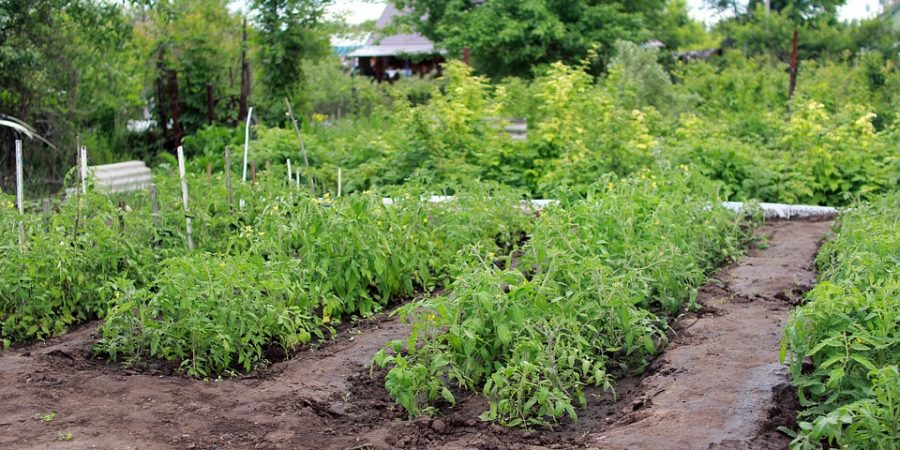Most Zambians have vegetable gardens at home. Did you know that preparing your vegetable garden soil is an important first step to successfully growing your own food? You can’t have healthy, productive veggies without rich soil that allows the roots to grow deep enough to soak up nutrients. Here are a few things you need to do to get your vegetable garden off to a strong start.
While well-drained soil with good water and nutrient-holding capacity is ideal, we usually have to make the most of the soil we have. The good news – soil quality can be improved. So, if you start with heavy clay soil or very sandy soil, there is always a solution.
One needs to possess good knowledge of how to effectively prepare the garden soil to ensure healthy plant growth. Let’s first look at the types of soil and vegetables you can grow in them.
Soil Types
It is important to understand the different types of soil and each type is generally classified by the size of the broken-down rock particles in the soil. The proportion of sand, silt, and clay particles determines the texture of your soil and affects drainage and nutrient availability.
Clay soil has fine particles giving it a high water-holding capacity. This enables it to hold nutrients too. Crops with shallow roots benefit from clay soil’s ability to retain moisture. These include cabbage, lettuce, kale, rape, peas…
Sandy soil has large particles but a very low water-holding capacity. Therefore, it doesn’t hold nutrients so well. However, it does warm up quickly and allows smooth gaseous exchange. Vegetables that thrive in sandy soil include carrots, radishes potatoes, tomatoes, zucchini, beans, cucumber…
Silt soil consists of tiny soil particles that are bigger than those of sandy soil. Loams comprise a mixture of clay, sand, and silt, and are fertile, well-drained, and easy to work. Because it is deep, well-drained, and highly productive, silt loam is suitable for a wide range of crops.
Acidic soil
For more details on checking the pH of your soil, please read the article: Testing your soil pH without a kit
Preparing soil for your vegetable garden
After selecting a good site for your garden, start by clearing off the rocks, weeds, and other plants which may be carrying diseases and pests to avoid any interference with new plants.
Digging the soil
Dig out an area to the width and depth of your spade or hoe and loosen the soil. As you are digging up the soil you need to be tipping it upside down while breaking down the soil by chopping into it.
Repeat this process, digging, tipping, and breaking down the soil in the whole area designated for a garden.
Here, the aim is to loosen the soil so that roots, water, and oxygen can easily penetrate the soil environment. Soil that has been prepared well will show a nice “crumb” structure, and it’s easy to penetrate with a tool when damp.
You wouldn’t want to get your soil compacted by people or animals passing through. Therefore, you should create beds. You can easily make double-digging beds to create raised beds ideal for virgin land.
Removing weeds
At this stage, you can easily see the different types of weeds and roots hanging on the surface. Remove all the visible weeds and roots to avoid them growing back up again, remove as much as possible with a steel garden rake as the soil is now well loosened into smaller particles.
Adding organic matter
Whatever your soil type, you should dig in some organic matter. In fact, you have to replace organic matter every year if you want to have a flourishing garden. It adds more nutrients to the soil and improves its structure, helping retain water.
In clay soils, organic matter breaks up the lumpy structure so the soil doesn’t crack, improves drainage, and makes it easier to work with.
You can use compost, leafmould, tree bark, mushroom compost, and manure, whichever you can get in bulk. When adding it to the soil, all of these organic materials will–over time–become fully composted and enhance soil fertility.
How to make compost
- Mix in the organic matter as you dig over your soil. When you dig out a good amount of soil, add organic matter to the trench then bury it.
- Ensure to add about 1 to 2 meters of organic matter to the height of the soil.
- Alternatively, you can just spread the manure on top of the soil without even mixing and leave it there. Eventually, the worms will do the digging in and mixing, this is done to avoid too much weed before planting.
After good preparation, the quality of your soil should say a lot about how well your plants will grow i.e., how fast water will be draining, how much nutrients the soil retains, how much oxygen the plants get, and how often will you be watering the garden.

This was super helpfull for us especialy first timers, but i personaly would love this information on pdf and i believe others would too, so please how can i get it in pdf.
0777080322
most true about an excellent site very professional.
a pdf available as a manual for collection will help farmers.
internet expenses can be reduced and a manual kept on paper for rea3sdy reference.
most impressive organisation.
Would love a PDF created
wonderful information..